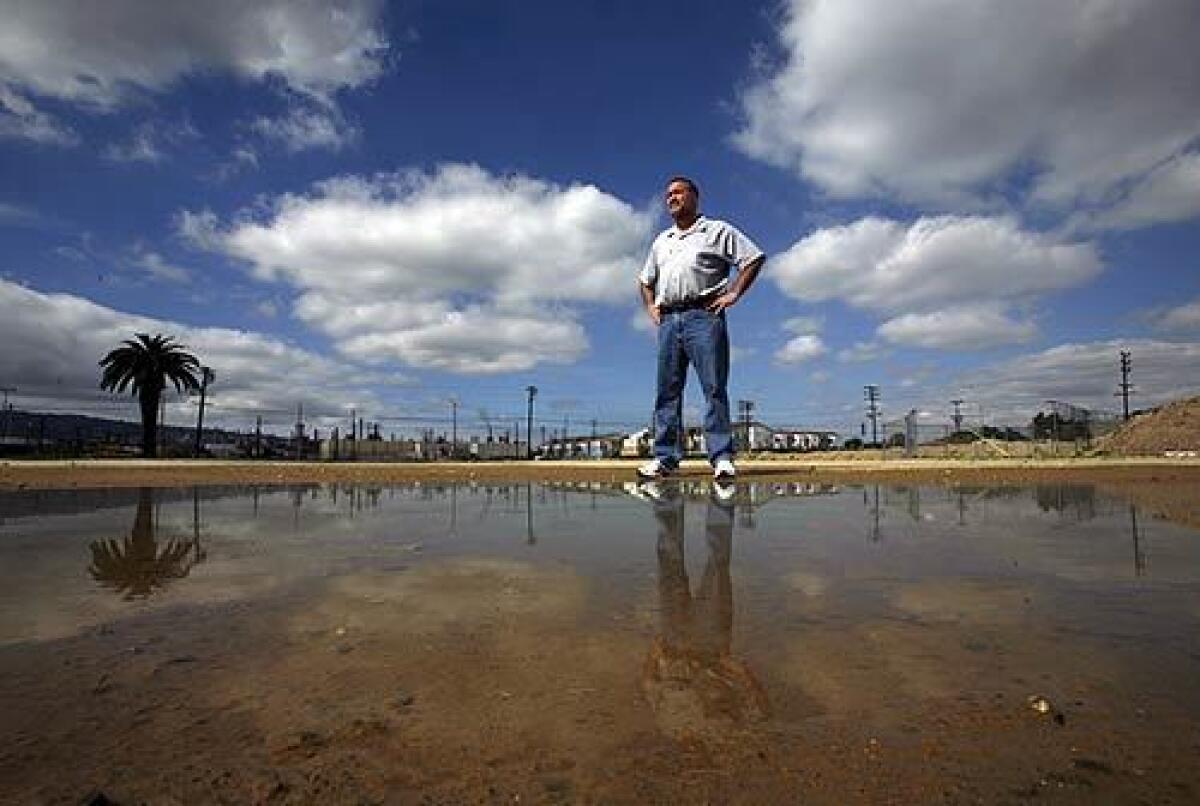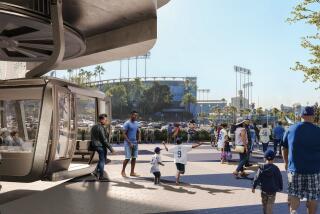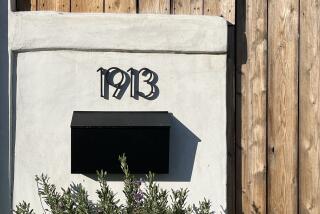Wilmington looks to a greener future

When visitors to Wilmington’s historic red-brick Chamber of Commerce ask what’s new, three topics tend to dominate the ensuing conversation.
One is the recent groundbreaking for a long-awaited 30-acre buffer of parkland separating the working-class community from the frenzy of diesel-spewing activity in the nation’s busiest port.
Another is a plan to establish a “green technology center” in what remains an edgy hodgepodge of junkyards, flaming refinery towers, fouled flood-control channels and shipping containers stacked so high the sun sets early on many neighborhoods.
The third is how Alma Ortiz made history. She’s the first person to run a tea shop in the area overrun with doughnut stands and greasy spoons.
“People around here have never seen anything like this place,” Ortiz, 36, said as she prepared a steaming tonic of oolong tea and ginseng powder. “We’re hoping to start some healthy new habits and offer people a quiet place to get away from it all.”
Green technology and organic tea have not been a part of Wilmington as long as big rigs and trains, but community leaders say they owe their rise to the way the area has been energized by entrepreneurial innovation and an avid interest in local affairs by Los Angeles city officials.
A byproduct of that new approach is the $57-million parkland buffer, which Ken Melendez spent 10 years trying to make a reality.
“This is the biggest and most positive improvement in the history of Wilmington,” said Melendez, a port community advisor. “It means the city of Los Angeles cares about the 70,000 people who live here. It means Wilmington is no longer a dumping ground for the port.”
Free of political gridlock and neglect, the community long regarded as a poor cousin to nearby San Pedro has become a work in progress.
Los Angeles Harbor College, a 9,300-student campus undergoing a $240-million renovation, has opened four structures in the last year, including a 67,000-square-foot technology building. City officials expect to plant more than 6,000 trees throughout the community over the next four years -- 2,000 of them in the buffer, which will be completed in 2010. In the area known as Ghosttown, crime has plunged since authorities routed a street gang known as East Side Pain a year ago.
In March, the port will complete a final environmental impact report for the proposed $212-million Wilmington Waterfront Project, which would include 150,000 square feet for light industrial use, a 10-acre pedestrian land bridge with an elevated park, 12,000 square feet of space for restaurant and retail outlets and floating docks for recreational vessels.
“It’s all part of a trend. We’re making good on our promise: Wilmington will not be forgotten,” said Los Angeles Mayor Antonio Villaraigosa, adding: “We’ve got a lot of work left to do.”
Under former Mayor James K. Hahn’s administration, most of the port’s community funds for renovations went to his hometown, San Pedro, on the port’s western flank. The focus shifted to Wilmington after the election four years ago of Villaraigosa and City Councilwoman Janice Hahn, and the appointment of new harbor commissioners.
“Finally, Los Angeles City Hall is listening to us,” said Wilmington activist Mary Gant, “and we can’t shut up.”
The hottest prospect in town is the proposed technology center, which would consist of a 5,000-square-foot office and research facility in San Pedro and a 10,000-square-foot light industrial facility in Wilmington.
The center would eventually produce cutting-edge maritime equipment, low-emission diesel engines, auxiliary power units and more. It would make Wilmington, said Chamber of Commerce Executive Director Dan Hoffman, “the green technology capital of the world.”
To outsiders who know Wilmington only as a no-man’s land of industrial blight and air pollution, that kind of talk might sound preposterous. But the community has a growing network of influential supporters to help make it a reality. Among them are Councilwoman Hahn.
“For so long, the only effects that the port had on Wilmington were negative: trucks bearing down on residential streets, children with asthma, containers stacked sky-high amid houses,” Hahn said. “Now, that’s all starting to change, and the green technology center represents an important part of that change with the promise of well-paying jobs, clean air and a burgeoning new industry for the area.”
In the meantime, Geraldine Knatz, the port’s executive director, has been making room in her budget for trees on the dingy waterfront.
Locals still talk about how she had dozens of 10-foot palms planted several blocks farther north along Avalon Boulevard, a main artery connecting the bustling business core to the harbor, than authorized by the city.
“What were they going to do, sue me for planting trees?” asked Knatz, the first port director to have an office in Wilmington. “I love Wilmington, and I’m going to deliver for them.”
The optimism is palpable in Wilmington, from Ortiz’s Hojas Premium Tea House on Pacific Coast Highway to Lysseth Parada’s year-old health food restaurant on Avalon, Hailey’s Cafe, not far from the buffer.
“My concept was simple: Why not offer people something other than burritos and pupusas?” Parada said. “I hope we’re only the first of many such places.”
Cecilia Moreno, a lifelong resident and chairwoman of the Wilmington Neighborhood Council, agreed.
“The political stars are aligned in our favor,” she said, “and we’re moving forward.”
More to Read
Start your day right
Sign up for Essential California for news, features and recommendations from the L.A. Times and beyond in your inbox six days a week.
You may occasionally receive promotional content from the Los Angeles Times.







